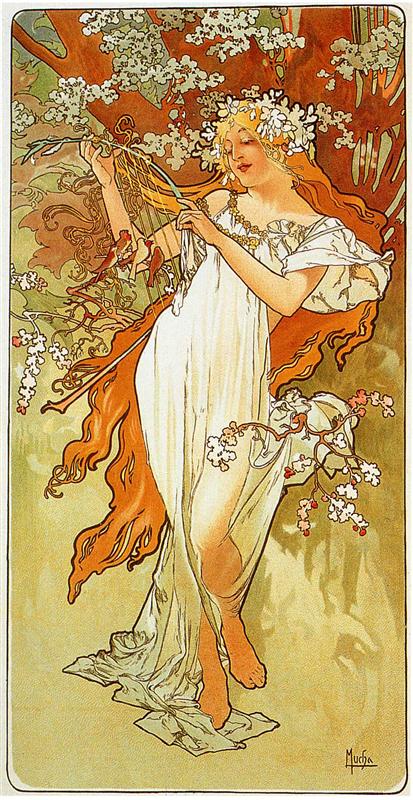Art is a vast universe filled with creativity, expression, and innovation. While we’re familiar with popular art movements like Impressionism, Cubism, or Surrealism, there are countless lesser-known movements that made significant contributions to the art world. In this blog post, we explore three art movements you probably never heard of: Neoclassicism, Art Nouveau, and Post-Painterly Abstraction.
Neoclassicism: Classical Art Repackaged



The Neoclassicism art movement emerged in the mid-18th century and persisted into the early 19th century, marking a profound shift in the artistic landscape of Europe. This movement sought to revive the classical art and culture of Ancient Greece and Rome, celebrating ideals of simplicity, symmetry, and proportion. In essence, Neoclassicism was classical art repackaged for a modern society.
Neoclassicism arose as a response to the ornate and extravagant designs of the Rococo style. As the Enlightenment encouraged a return to reason and logic, artists began looking back to the classical past for inspiration.
Key Characteristics of Neoclassicism
Emphasis on Reason and Order: Neoclassical artists valued clarity, logic, and rationality, depicting themes centered around heroism and moral virtue.
Inspiration from Classical Antiquity: The movement drew heavily from ancient Greek and Roman art, incorporating elements such as idealized human forms, balanced compositions, and the use of mythological subjects.
Simplicity and Restraint: Unlike the elaborate ornamentation of the Rococo style, Neoclassicism favored a more restrained aesthetic, using a limited color palette and clean lines.
Historical Themes: Many Neoclassical works focused on historical or mythological narratives, often conveying moral lessons or civic virtues.
Art Nouveau: The Flowing Beauty of the 19th Century



Art Nouveau, a term derived from the French for “new art,” emerged in the late 19th century as a reaction against the academic art styles of the time. Characterized by its organic forms, flowing intricate patterns, and celebration of nature, Art Nouveau is a fascinating movement that inspires artists and designers even today.
The Origins of Art Nouveau
The origins of Art Nouveau began in the 1890s in Europe, particularly in France, Belgium, and Austria. The movement was heavily influenced by the fine arts and included stained glass, painting, and intricately crafted wood and metal. The Art Nouveau style made its way into architecture, interior design, graphic design, and the decorative arts.
The Distinct Style of Art Nouveau
The style of Art Nouveau consists of flowing, organic shapes that copy natural forms. A hallmark of Art Nouveau artwork is flowing lines, asymmetry, and stylized floral motifs, creating a sense of harmony and elegance.The designs are not just visually stunning; they also evoke a sense of movement and rhythm.
Post-Painterly Abstraction: A New Dawn in Modern Art



Post-painterly abstraction appeared in the late 1950s and early 1960s as a significant movement in the modern art world. Characterized by a departure from the emotional intensity of Abstract Expressionism, this artistic movement emphasizes clarity, precision, and exploration of formal elements.
What is Post-Painterly Abstraction?
Post-painterly abstraction is a term coined by art critic Clement Greenberg in 1964. This movement focuses on the medium itself and the use of color as a primary component of composition. Unlike the gestural brushstrokes of Abstract Expressionism, post-painterly abstraction employs flat surfaces, clear lines, and a more restrained color palette. Post-painterly abstraction engages viewers through the purity of form and color rather than emotional expression.
Five Key Characteristics of Post-Painterly Abstraction
Flatness: Artists embrace the two-dimensionality of the canvas, opting for smooth surfaces devoid of texture. This flatness emphasizes the painting as an object rather than a window into another world.
Color Field: Bold, vibrant colors are used in large, unmodulated areas. Artists focus on color as a primary means of communication, creating immersive experiences for viewers.
Geometric Shapes: Many post-painterly abstractionists incorporate geometric shapes and forms, emphasizing the structural aspects of art.
Minimalism: The movement leans towards minimalism, stripping down compositions to their essential elements, allowing for clarity and precision.
Non-Narrative: Unlike many art movements laden with symbolism or narrative, post-painterly abstraction focuses on the visual experience itself, inviting viewers to engage with the artwork on a purely aesthetic level.
Conclusion
Art is a reflection of society, capturing the ethos of different eras and movements. Neoclassicism, Art Nouveau, and Post-Painterly Abstraction, although lesser known, are among the most significant art movements in history. Each represents a distinct response to cultural, social, and technological changes of its time. Even today, they have a lasting impact on contemporary art.

More on art movements: Exploring the Nuances of 5 Similar Types of Art Movements
Discover more from Rhonda Roth Art
Subscribe to get the latest posts sent to your email.